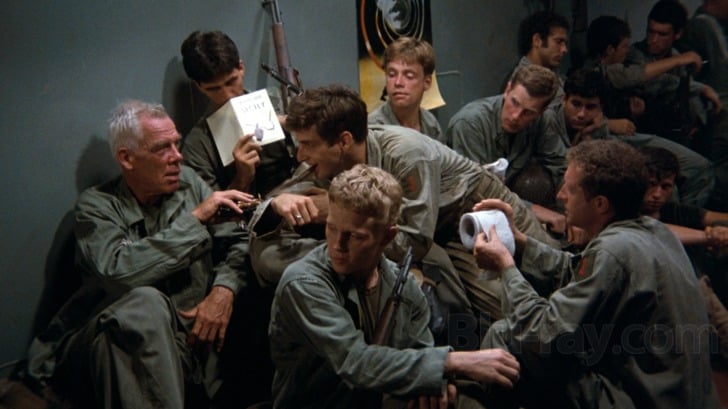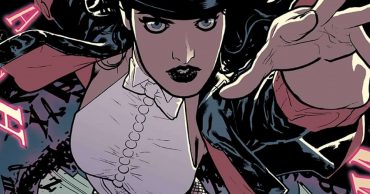
Saving Private Ryan is a one of the most impactful cinematic endeavors produced within the last 35 years. This is because the Steven Spielberg film is not the prototypical World War II picture and, according to World War II Museum Senior Historian Rob Citino, “since its premiere in 1998, Saving Private Ryan has become a kind of exemplar … of what it means to generate realism in Hollywood”. It is “Saving Private Ryan’s depiction of the sense of chaos and confusion of combat” (Farrell) that makes it an affective film by illuminating the horrors of war. These are the tenets of the modern day World War II cinematic masterpiece, however, they were not invented by the film Saving Private Ryan, they were duplicated by it.
The horrors of war do not adhere to form or function and neither does the 1980 war film The Big Red One. Sam Fuller wrote and directed this ambitious picture with seemingly classic war epic aspirations but in the end, succeeded in completing a partly autobiographical battle movie with war as its backdrop. Did Fuller fail in an attempt to create a traditional World War II picture? – Absolutely. Was it Fuller’s intent to create the prototypical World War II picture? – Absolutely not.
The Big Red One was Sam Fuller’s “last war film, the film he had been trying to make for thirty years” (Thompson). The film tells the tale of four WWII privates of the U.S. Army’s First Infantry Division, known simply as The Big Red One, distinguished by the infamous red numeral one patch worn on the sleeve and incidentally, “pronunciation should emphasize the title’s last word” (Bradshaw). The privates belong to a squad led by a mythical and legendary Sergeant, a WWI veteran, captured brilliantly by the legendary and mythical Lee Marvin, a WWII veteran.
Fuller, in a 1978 interview, laid out the film’s blueprint: “We are concentrating on only five men in the squad and their world, which is the radius of at the most 50 yards” (Ockersen). The four young GIs are christened the “Four Horsemen” down at battalion because they are the Sergeant’s only constants in the squad due to the fact that, as Pvt. Zab states, “our replacements keep gettin’ hit instead of us”. Pvt. Zab, cerebrally portrayed by Robert Carradine, provides strategic narration as the films mode of story advancement and serves as “Fuller’s cynical, cigar-smoking alter ego” (Scott).
As the boys and their battle hardened leader inhale the realities of war via adventure laced treks, very reminiscent of Saving Private Ryan, they embark on a WWII tour that would make Forest Gump proud! As Gump seems to witness every important event of the last part of the twentieth century in person, the Serge’s Horsemen become eyewitness to seemingly every swing event late in the war. Fuller organizes his picture by offering the war segmented by these monumental battles that include taking on The Desert Fox at The Battle of the Kasserine Pass in 1943, encountering Il Duce’s fascistas in Sicily, and participating at the Battle of the Bulge after serving as first line invaders at Omaha Beach in 1944. The film is concluded as the boys carry out the last official action of the war, liberating the Nazi death camp at Falkenau in Czechoslovakia in May of 1945. The battle scenes are much like the way Fuller viewed war himself, as organized chaos while “the images in The Big Red One are both blunt and artful” (Scott). “They fight. They are frightened. Men kill, other men are killed. What matters is if you’re still alive” (Ebert).
Sam Fuller never sat out to make a war epic. As he stated in a 1994 interview, “I didn’t want to compete with some very fine war movies…Theirs were fake and I did not want it to be fake”. He knew what was real or not because he was actually there. It is this factual actuality that makes it “very clear where Steven Spielberg got his inspiration for Saving Private Ryan” (Croon).
The Big Red One is relevant to today’s audiences because the romanticized notion of war takes a backseat to its most primal of realities. The essence of the film results from the bond formed by the collective group goals of the squad, much the same format as Spielberg’s modern day war classic, however, “though Spielberg must have taken his cue from Sam Fuller” (Bradshaw), the goals are very much different. While Saving Private Ryan stresses the traditional war glory characteristic of self sacrifice for the good of the group, the final line of Pvt. Zab’s narration soberly quips “surviving is the only glory in war”.
In addition to the tombstone eyed Marvin and Robbie Carradine, who was coming off his haunting portrayal of a severely damaged Vietnam veteran in Coming Home, Mark Hamill sheds his Jedi garb and turns in a serviceable performance as Pvt.Griff. Attempting a poor Sgt. York impression, Pvt. Griff is “the reluctant warrior who hates war but fights nonetheless” (Belton). This decision is made very easy by the Sergeant’s seasoned words as Pvt. Griff tells his commanding officer that he cannot murder anybody, to which Marvin’s gravely baritone coldly retorts “We don’t murder. We kill”. These are the simply truths through the lens of the madness of war as Fuller presents them. This is war, the primary objective is to survive and there is no room for sentimentality.
Not only does Fuller not embrace sentimentality, he “wants to remove sentimentality from the platoon” (Doherty). These sentiments of anti-sentimentality are reflected when Fuller, or rather, Zab remarks that “we began to view our replacements as dead men who temporarily had the use of their arms and legs. They came and went so fast and regular that sometimes we didn’t even get to know their names”.
Sam Fuller was there. Steven Spielberg was not. As great as Private Ryan is, that truism is inescapable. Spielberg’s brilliance manifests in his realization that there is no substitute for experience when the horrors of war are concerned. This is precisely where Private Ryan duplicates Fuller’s archetype. The Big Red One presents WWII as both true and story. Entertaining? — Yes. Interesting? — Emphatically. “Grotesque – maybe, yet Fuller’s instinctive brashness and crudity were arguably closer to the madness of war than Spielberg’s more solemn account” (Bradshaw).
The Big Red One is a war film that doesn’t directly deal with war. This is because war cannot be comprehended when you’re in the midst of it, all that matters is that 50 yard radius around you. As Pvt. Zab explains in the film, “The creepy thing about battle is that you always feel alone. All you can see are the guys right next to you, and the bodies you keep tripping over”.
The Big Red One certainly belongs in the pantheon of modern WWII classics and has gained appreciation since its initial release. This is because Fuller’s masterpiece was made at a time when the realities of the world’s second Great War were not fully explored cinematically and the romanticized myth of WWII was not aptly pierced. Essentially, “It was a movie caught between two eras. Basically, a 1959 movie in 1980” (Scott). As such, The Big Red One “also seems prophetic. It stands both as a precursor to “Saving Private Ryan” (which was released in 1997, the year of Fuller’s death) and as an answer to it” (Scott).
Sam Fuller’s The Big Red One is the model for every true WWII film produced in its wake, including Saving Private Ryan, because it is not a fairy tale. It is not a slickly produced epic. It is a realistic record detailing the only glory in war – surviving. Some may consider it a love letter to grunt comradery. Thematically, it has been characterized as “a flashback to the studio era following an onslaught of Vietnam rock ‘n’ roll extravaganzas that had thrown the old spatial-narrative-thematic decorum out of whack for good” (Jones).Whatever the case, The Big Red One certainly is not your Grandfather’s World War II picture – Or maybe it is if he actually fought in it and was lucky enough to make it back.
Works Cited:
- Belton, J. American Cinema/American Culture. New York: McGraw-Hill, 2013. 207. Print.
- Bradshaw, P. (April 28, 2005). Review: The Big Red One. Retrieved October 19, 2018 from https://www.theguardian.com/theguardian/2005/apr/29/5
- Croon, R. (2018). Letterbox Review: The Big Red One. Retrieved November 6, 2018 from https://letterboxd.com/film/the-big-red-one/
- Doherty, T. (1994). The American Cinema Series. Retrieved October 20, 2018 from http://www.learner.org/vod/vod_window.html?pid=210. Video.
Ebert, R. (January 1, 1980). Review: The Big Red One. Retrieved October 16, 2018 from https://www.rogerebert.com/reviews/the-big-red-one-1980 - Farrell, K. (July 12, 2018). Saving Private Ryan: History vs. Hollywood. Retrieved November 6, 2018 from https://www.nationalww2museum.org/about-us/notes-museum/saving-private-ryan-history-vs-hollywood
- Jones, K. (November 14, 2004). You Had to Be There. Sam Fuller Was. Retrieved October 21, 2018 from https://www.nytimes.com/2004/11/14/movies/you-had-to-be-there-sam-fuller-was.html
- Ockersen, T. (March 4, 2017). Sam Fuller and The Big Red One. Retrieved October 17, 2018 from https://www.youtube.com/watch?v=srVJsCRJJLc. Documentary.
- Scott, A.O. (November 14, 2004). You Had to Be There. Sam Fuller Was. Retrieved October 17, 2018 from https://www.nytimes.com/2004/11/14/movies/you-had-to-be-there-sam-fuller-was.html
- Thompson, R. (November 2007). Critique: The Big Red One. Retrieved October 18, 2018 from http://sensesofcinema.com/2007/cteq/big-red-one-thompson/
 Follow Us
Follow Us





